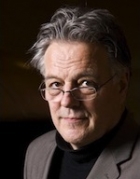Sense-making through science
The compensatory control model (CCM; Kay et al., 2008; Kay, Whitson, Gaucher, & Galinsky, 2009) can be employed to explain these effects; which all can be seen as ways to maintain or increase perceptions of order. Simply put, the CCM argues that when personal control is low, people can compensate by bolstering belief in external sources of control (see also Rothbaum, Weisz, & Snyder, 1982). Thus, control-threat motivates people to bolster their belief in a controlling God, strong government, or affirm their membership of a powerful in-group, because these offer external control. Superstitious beliefs and falsely detecting patterns and causality can be interpreted as attempts to restore personal control (i.e., illusory control, Langer, 1975; Matute, 1994; Rothbaum et al., 1982; Whitson & Galinsky, 2008). It is important to note that the basic tenet of the CCM is that maintaining perceptions of order and avoiding perceptions of randomness is the core motive, and that personal (either illusory or real) and external control are intersubstitutable means to maintain these order perceptions. Given that the CCM argues that personal and external control are interchangeable, hydraulic sources of order, and that perceiving order and stability in the world is the primary motivation underlying control motivation, compensation would be – according to the model – functionally equivalent to regulation.
Fig. 1. An analogy (Kay et al., 2008) to explain the compensatory control model. Imagine that a full glass represents sufficient perceived order and stability in the world. We can start by filling the glass with personal control over outcomes. Since this often will not suffice (personal control tends to fluctuate) we add to the order-cocktail a certain amount of external control. Together, personal control and external control should fill the glass completely. When one source of order fluctuates (e.g., decreases), the other does so too (e.g., increases).
Ample research indeed has shown that threats to personal control trigger attempts to restore personal control (e.g., Whitson & Galinsky, 2008) and affirm external control (Fritsche et al., 2008; Kay et al., 2008; 2009). Moreover, threats to external control similarly spark attempts to restore personal control (Kay et al., 2008) and bolster alternative sources of external control (Kay, Shepherd, Blatz, Chua, & Galinsky, 2010). Directly threatening order perceptions, finally, has similar effects on bolstering faith in external sources of control (Kay, Moscovitch, & Laurin, 2010).
Thus, research until now has primarily focused on two routes to sustain or meet a belief in an orderly world: maintaining personal control over life and future outcomes, and bolstering belief in –mostly religious and socio-political— external systems or agents that exert control over the world. Inspired by CCM’s contention that maintaining order perceptions is the primary motivation, however, we have been pursuing a research program that aims to extend the model by venturing beyond external agency (such as belief in a controlling God or government) and focusing on threat compensation without external control. More specifically, we focused on science.
Scientific belief systems as threat compensation
As described in the previous paragraph, research has primarily focused on how personal control and external control help create order in the world. Recently, however, we proposed (in line with CCM’s assumptions) that a) order affirmations that do not involve external control can also suffice, and that b) science may function as such a source of order (Rutjens et al., 2013; Rutjens et al., 2012). The research that we will describe in the remaining part of the article focuses on scientific theories that impose order on reality, and on more general beliefs about scientific progress. .



